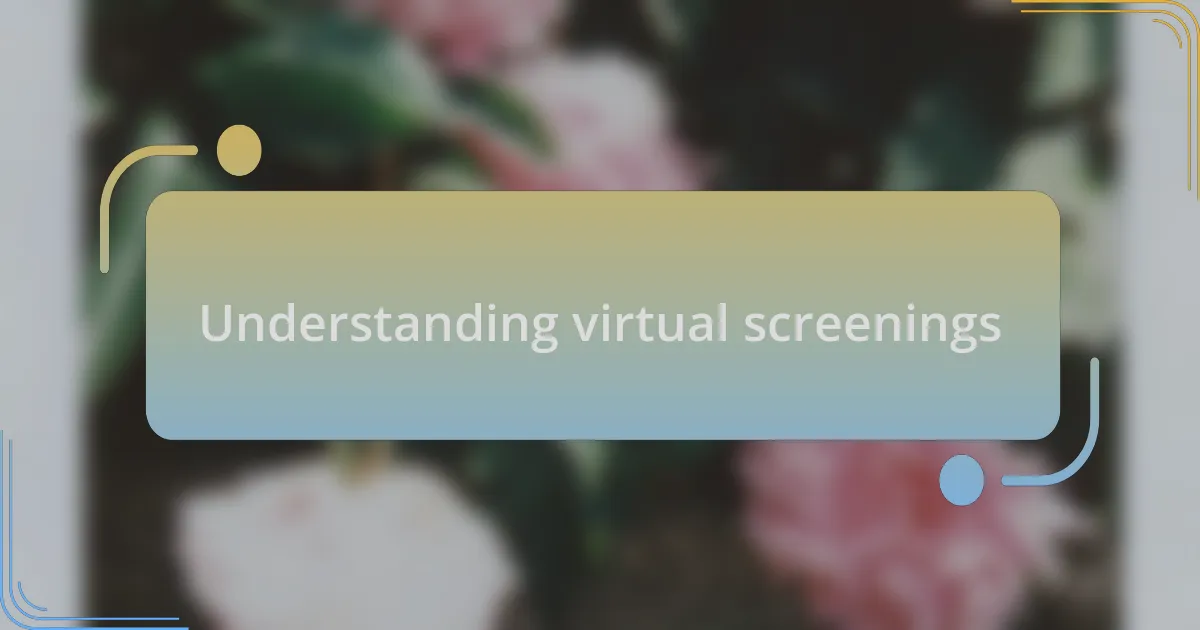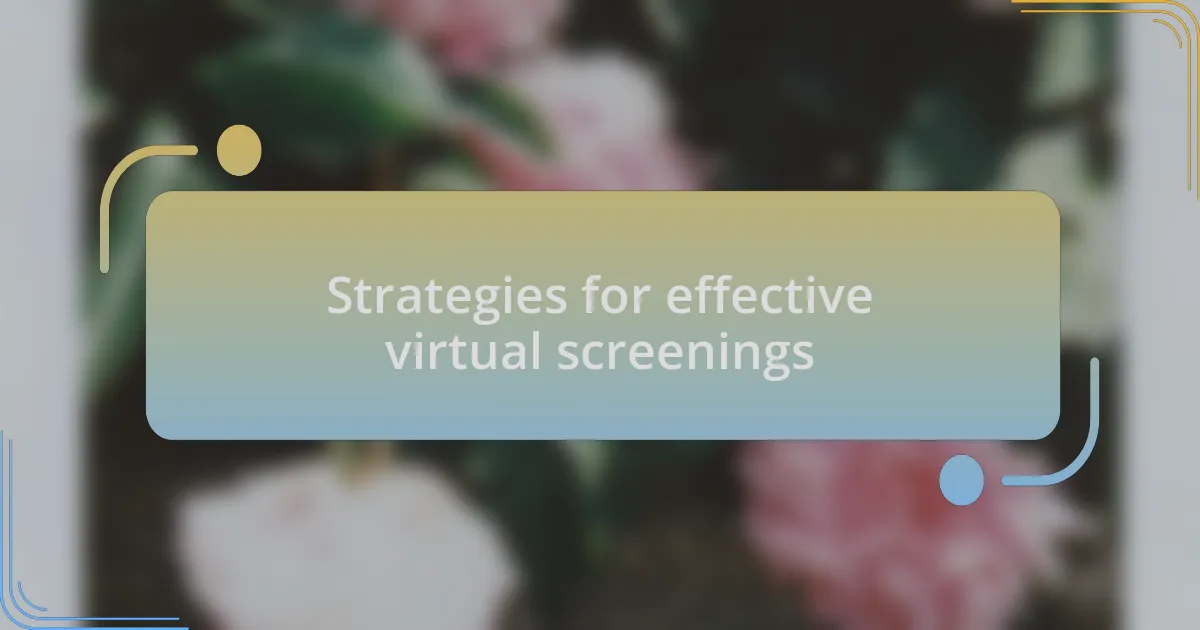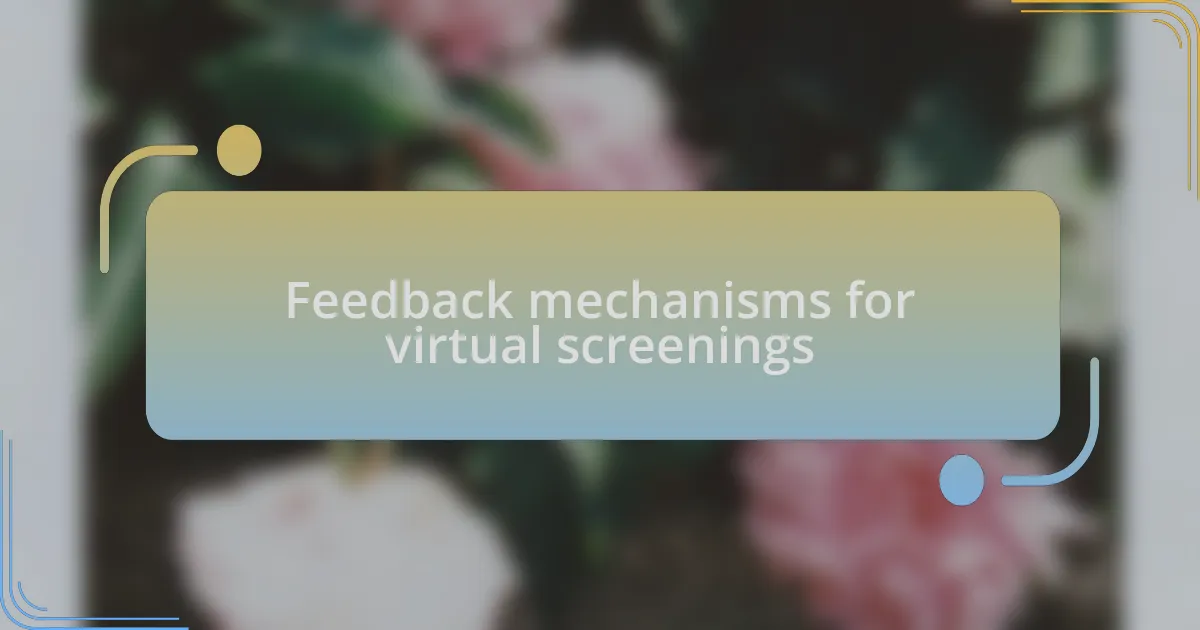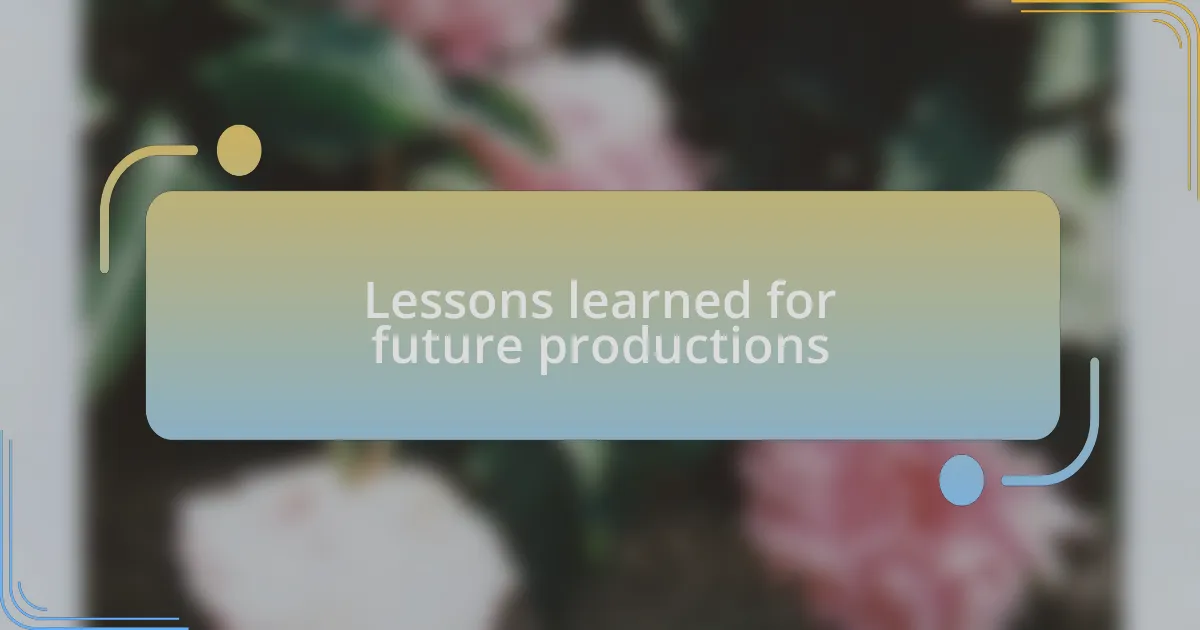Key takeaways:
- Virtual screenings enhance global accessibility but can lack the communal atmosphere of traditional theaters, impacting emotional connections.
- Engagement strategies such as social media promotion, live Q&As, and interactive discussions can enrich viewer experiences, transforming passive watching into active dialogue.
- Collecting real-time feedback through surveys and live chat can provide deeper insights into audience reactions and foster a sense of community.
- Immediate feedback is more valuable than delayed responses, as it captures genuine audience emotions and enhances narrative connections.

Understanding virtual screenings
Virtual screenings have revolutionized how we share and experience films, particularly in today’s digital-first world. I remember the first time I attended a virtual premiere; it was surreal being able to mingle with fellow cinephiles in a chat room while watching a film unfold on my screen. I can’t help but wonder, how does this new format impact the emotional connection we typically feel in a theater?
One of the most fascinating aspects of virtual screenings is their ability to reach global audiences instantly. I recall a filmmaker sharing how their small indie film found viewers in countries they had never considered reaching. Isn’t it incredible how a digital platform can turn a local project into an international sensation, fostering a diverse dialogue among viewers?
However, the experience isn’t without its challenges. I noticed that while some viewers love the convenience of streaming from home, others miss the communal atmosphere of a packed theater. Have you ever felt the electric energy of audience laughter or gasps? It’s moments like these that make me question if virtual screenings can ever fully replicate that shared joy.

Strategies for effective virtual screenings
Creating an engaging virtual screening experience requires effective communication and promotion. I’ve found that leveraging social media platforms can generate buzz before the event. I once organized a screening and shared behind-the-scenes content and trailers across various channels, which not only piqued interest but allowed potential viewers to feel invested in the film even before watching it. Have you ever seen a film that felt like a part of you before you even pressed play?
Another key strategy involves fostering interaction during the screening. I’ve attended sessions where filmmakers actively engaged with the audience through a live Q&A after the film. This element transformed the experience from passive watching to an enriched dialogue, allowing participants to immerse themselves deeper into the film’s themes. How often do you get to hear directly from the creator about their inspiration?
Lastly, technical preparation cannot be overlooked. During one virtual event, I faced buffering issues that disrupted the flow and enjoyment for everyone involved. To avoid such pitfalls, I always make sure to test the technology in advance and provide clear instructions for viewers on how to join. Isn’t it reassuring to know you’ve set the stage for a smooth viewing experience?

Engaging audiences through virtual screenings
Creating a sense of community is crucial in virtual screenings; I learned this firsthand during a recent event where we used interactive polls throughout the film. It was fascinating to see how audience reactions shifted in real time, fostering a shared experience that felt almost tangible. Have you ever felt connected to other viewers even when separated by screens?
Incorporating themed discussions post-screening has also proven to be a powerful engagement tool. After one particular screening, I initiated a dialogue about the social issues presented in the film. This sparked passionate conversations where viewers shared their perspectives and insights, transforming a solitary activity into a collective exploration of the film’s message. Isn’t it incredible how film can unite people around common interests and concerns?
Moreover, tapping into personal stories can enhance the emotional resonance of a screening. I once invited a guest speaker who shared their own connection to the film’s subject matter, creating a bridge between the audience’s experience and the film’s narrative. This approach made the screening feel more intimate, almost like a gathering of friends discussing a cherished story instead of just a casual viewing. How often does a film truly resonate with you at such a personal level?

Feedback mechanisms for virtual screenings
Collecting feedback through direct surveys after virtual screenings has become a game changer for me. I remember implementing a simple Google Form where viewers could share their thoughts shortly after watching. The insights I gathered were invaluable; they revealed not just preferences for specific elements, like pacing and sound, but also nuanced feelings that the film evoked. Isn’t it amazing how a few targeted questions can unlock a treasure trove of audience emotions?
In another instance, I experimented with live chat features during the screening. This approach allowed audiences to provide immediate reactions, which boosted the overall engagement. Some viewers would share surprising interpretations that I hadn’t considered, leading me to rethink certain aspects of the film. Isn’t it refreshing to realize that the audience brings their unique lenses to the storytelling process?
Feedback doesn’t end with structured methods, though. I’ve found that simply encouraging open dialogue in follow-up emails generates organic and heartfelt responses. After one screening of a poignant documentary, a viewer shared their personal connection to the subject matter, highlighting how it changed their perspective. This kind of heartfelt feedback not only moves you but also enriches the community around your work—don’t you think it’s these shared experiences that enhance the impact of film?

Lessons learned for future productions
One key lesson I learned during virtual screenings is the critical importance of timing in feedback collection. I once waited a week to reach out for responses, fearing the initial thrill of watching had faded. To my surprise, the reflections were nowhere near as rich as the real-time feedback I gathered during the screening. How often do we underestimate the power of that immediate reaction? It’s in those fresh, unfiltered moments that audiences truly connect with the narrative.
I also discovered that incorporating interactive elements, like live polls, not only garners insights but also fosters a sense of community among viewers. At one screening, I included a quick poll asking which character resonated most with the audience. The results sparked a lively discussion that illuminated different cultural perspectives. Each viewer’s unique take enriched our understanding of the film’s themes. Isn’t it fascinating how a simple question can create such a vibrant exchange?
Lastly, I’ve realized that following up with viewers post-screening can lead to unexpected deep dives into their experiences. After one documentary screening, I casually reached out to a viewer who had previously shared their thoughts. What started as a thank-you note transformed into a heartfelt conversation that uncovered layers of personal stories connected to the film’s subject. It’s moments like these that remind me of our shared humanity within the art of storytelling. Don’t you believe those personal connections could elevate our productions in ways we hadn’t imagined?